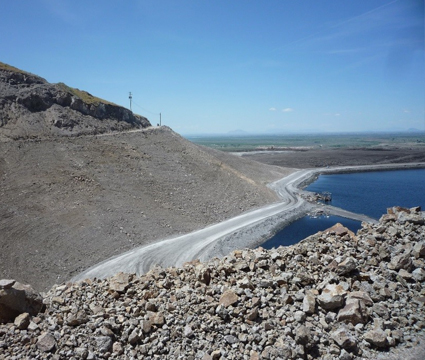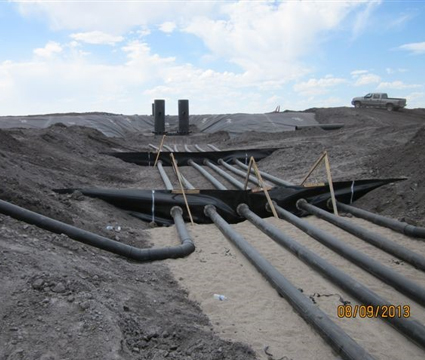Expansion of Phosphogypsum Storage Stack
Expansion of Phosphogypsum Storage Stack
Corporate Engineering Group
This fertilizer Plant in Pocatello, Idaho, began producing Phosphoric Acid and other phosphate fertilizer products in 1944. Today the plant produces over 1 million tons of product annually. The byproduct of the process, phosphogypsum (gypsum) has been slurried with water and transported and stored in large storage areas (stacks) on the site. For many years the gypsum was stored in unlined stacks. Leachate from the stacks permeating into the ground over the years, resulted in contaminated groundwater discharges. In order to continue fertilizer production in an environmentally conscious manner, the Owner retained Ardaman & Associates, Inc. to design lined facilities, and expand the stack storage vertically. Lining of the stack is part of a source control action to reduce seepage and loading of phosphorus to ground water beneath the stack. The fully lined stack will reduce seepage of low pH process water to groundwater from approximately 850 gpm to less than 1 gpm, which meets the owner’s compliance agreement with the US EPA and Idaho DEQ.
Design and construction of this project encompassed many separate elements. Since the expansion had to primarily sit on top of the existing stack, it was necessary to construct the storage areas in stages, and to date they encompass six separate cells of varying size, configuration and character. Four of the cells (Nos. 2 through 5) are adjacent to the mountainside and require innovative and unique design and construction methods to safely store the gypsum against the rugged mountain slope that was as steep as 34 degrees. The analysis of the gypsum characteristics required an extensive series of physical and chemical tests to evaluate the gypsum strength, compressibility, permeability and erodibility. The geotechnical engineering analysis was complex especially evaluating consolidation of the existing and future stacks over time. The depth of existing compressible gypsum beneath the proposed vertical expansion was highly variable, creating the potential for significant differential settlements. Every design element within the stack (drains, pipelines, drainage structures, liner, access roads, etc.) had to be individually evaluated to assess the long term impact of these settlements.
The project was selected for an Honor Award by the Florida Institute of Consulting Engineers as part of their Engineering Excellence Awards program.




